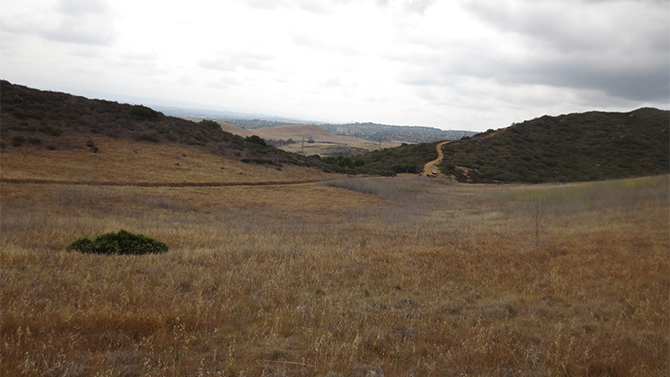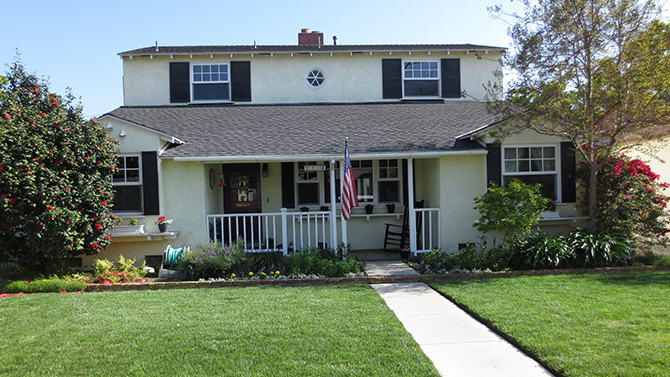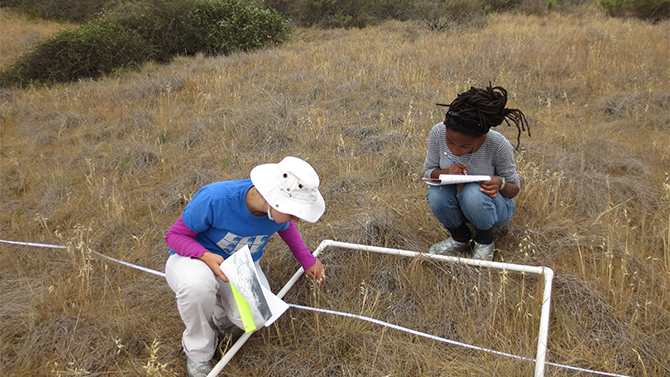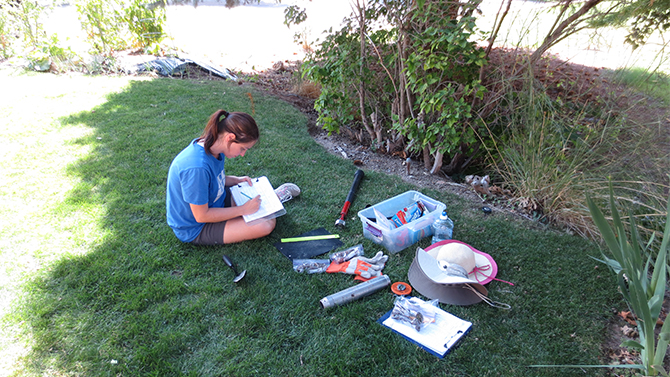

Los Angeles lawns
Photos courtesy of Tara Trammell April 25, 2017
UD’s Trammell looks at similarities, differences among American lawns
As cities and suburbs have sprawled across the United States, they have not only provided new housing and developments but also given rise to what researchers are calling the American residential macrosystem, a new biome encompassing urban, suburban and extra-urban lands with biological, geophysical and social components that interact with one another.
Using six cities from across the United States, the University of Delaware’s Tara Trammell is part of a team of researchers from multiple universities looking at factors that contribute to stability and change in the American residential macrosystem as well as the future ecological implications at the ecosystem, city, regional and continental scales.
The research is funded by the National Science Foundation (NSF) Macrosystems Biology Program and builds off prior work that was funded by NSF in 2012. The research includes study sites in Boston, Baltimore, Miami, Minneapolis-St. Paul, Phoenix and Los Angeles.
Trammell, the John Bartram Assistant Professor of Urban Forestry in the Department of Plant and Soil Sciences in UD’s College of Agriculture and Natural Resources, conducted her part of the project in Los Angeles in 2012 and will once again return to the city.
She said the original project looked at the ecological homogenization of America by researching residential lawns across those six cities, which are in different ecological biomes and climates, to see how similar the residential ecosystems were becoming based on people’s preferences and behaviors.
The research hypothesis was that the residential ecosystems and landscapes across the continent are more similar than the native ecosystems that they replaced, which can lead to altered ecosystem structure and function.
“The original project was a collaboration between social scientists looking at the social drivers of the American residential macrosystem and ecologists studying the ecological impacts of yard management. We found evidence for ecological homogenization in plant communities, soils, and nutrient pools, yet at the same time yard management may or may not be the same,” said Trammell.
This project will examine what factors, such as social drivers, are contributing to the stabilization or to changes of the residential ecosystems.
“There is an interaction between biophysical drivers and social drivers together effecting the homogenization. We’re trying to understand what factors are contributing to changes in residential systems and what factors contribute to stabilizing them,” said Trammell.
Some of these stabilizing factors include commercial drivers and perceived social norms or values, while agents for change include planting more wildlife supporting plants, using less fertilizer or utilizing xeriscaping — low water landscaping that is nearly devoid of plants.
Social factors that contribute to the changes or stabilization in the system include how much time people put into their lawns which can be dictated by life stage and socioeconomics.
“It’s not just the amount of resources you can put into the yard but your time. When I was in LA conducting homeowner interviews, several people who recently retired had plans for their yard. They were finally going to have time for landscaping versus the people who may have been working full-time with families,” said Trammell.
In addition to life stage and economic considerations, there are top down regulations that need to be taken into account as well. In Los Angeles, for example, with water use and water availability issues, regulations come into play that change people’s behavior.
The research will look at the ecological implications for these potential changes and stabilizations, focusing on how management influences hydrology, nutrient cycling and biodiversity.
“People are instituting hydrologic efficient aspects in their lawns, such as rain gardens or xeriscaping in the arid climates. How are these changes in yard management effecting ecological function? We’re looking to see if nutrient use efficiency, water use efficiency and wildlife supporting management behaviors in your yard effect biodiversity at different trophic levels and nutrient retention or runoff,” said Trammell.
The first project measured plant communities, soils and microclimate, while this time around the researchers are going to include higher trophic levels and water and energy balance.
“We’re adding insect and bird biodiversity to the study to see if yards with greater plant biodiversity support higher trophic levels,” said Trammell.
Contact Us
Have a UDaily story idea?
Contact us at ocm@udel.edu
Members of the press
Contact us at 302-831-NEWS or visit the Media Relations website





